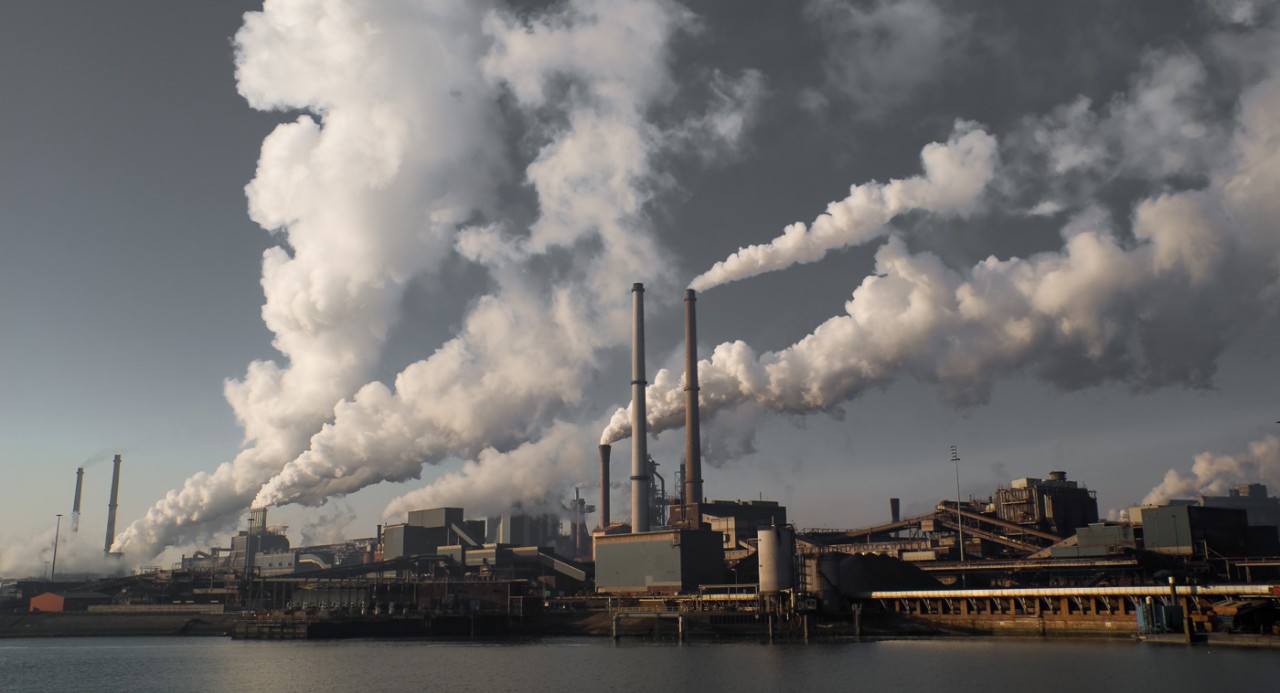
UC engineers' CO2 conversion helps industry, addresses climate
National research team led by UC professor develops more efficient system to address climate change
Engineers at the University of Cincinnati created a more efficient way of converting carbon dioxide into valuable products while simultaneously addressing climate change.
In his chemical engineering lab in UC’s College of Engineering and Applied Science, Associate Professor Jingjie Wu and his team found that a modified copper catalyst improves the electrochemical conversion of carbon dioxide into ethylene, the key ingredient in plastic and a myriad of other uses.
Ethylene has been called “the world’s most important chemical.” It is certainly among the most commonly produced chemicals, used in everything from textiles to antifreeze to vinyl. The chemical industry generated 225 million metric tons of ethylene in 2022.
Wu said the process holds promise for one day producing ethylene through green energy instead of fossil fuels. It has the added benefit of removing carbon from the atmosphere.
“Ethylene is a pivotal platform chemical globally, but the conventional steam-cracking process for its production emits substantial carbon dioxide,” Wu said. “By utilizing carbon dioxide as a feedstock rather than depending on fossil fuels, we can effectively recycle carbon dioxide.”
The study was published in the journal Nature Chemical Engineering.

In his chemical engineering lab, Associate Professor Jingjie Wu experiments with new ways to convert carbon dioxide into useful industrial products. Photo/Andrew Higley/UC Marketing + Brand
Wu’s students, including lead author and UC graduate Zhengyuan Li, collaborated with Rice University, Oak Ridge National Laboratory, Brookhaven National Laboratory, Stony Brook University and Arizona State University. Li received a prestigious graduate student award last year from the College of Engineering and Applied Science.

UC College of Engineering and Applied Science graduate Zhengyuan Li was lead author of a research project to convert carbon dioxide to ethylene. Photo/Jingjie Wu
The electrocatalytic conversion of carbon dioxide produces two primary carbon products, ethylene and ethanol. Researchers found that using a modified copper catalyst produced more ethylene.
“Our research offers essential insights into the divergence between ethylene and ethanol during electrochemical CO2 reduction and proposes a viable approach to directing selectivity toward ethylene,” lead author Li said.
“This leads to an impressive 50% increase in ethylene selectivity,” Wu said. “Ideally, the goal is to produce a single product rather than multiple ones.”
Sponsored by the U.S. Department of Energy’s Office of Energy Efficiency and Renewable Energy. Its Industrial Efficiency and Decarbonization Office is leading efforts to reduce fossil fuels and carbon emissions in industry wherever possible.
Li said the next step is refining the process to make it more commercially viable. The conversion system loses efficiency as byproducts of the reaction such as potassium carbonate begin forming on the copper catalyst.
“The electrode stability must be improved for commercial deployment. Our next focus is to enhance stability and extend its operation from 1,000 to 100,000 hours,” Li said.
Wu said these new technologies will help make the chemical industry greener and more energy efficient.
“The overarching objective is to decarbonize chemical production by utilizing renewable electricity and sustainable feedstock,” Wu said. “Electrifying the conversion of carbon dioxide to ethylene marks a significant stride in decarbonizing the chemical sector.”
Featured image at top: UC Associate Professor Jingjie Wu is working on new technology to convert carbon dioxide into ethylene in his chemical engineering lab. Photo/RMitsch/Unsplash

UC Associate Professor Jingjie Wu holds multiple U.S. patents on chemical engineering technology designed to improve industry. Photo/Andrew Higley/UC Marketing + Brand
Impact Lives Here
The University of Cincinnati is leading public urban universities into a new era of innovation and impact. Our faculty, staff and students are saving lives, changing outcomes and bending the future in our city's direction. Next Lives Here.
Related Stories
Conversion process turns pollution into cash
March 17, 2022
Engineers at the University of Cincinnati have developed a promising electrochemical system to convert emissions from chemical and power plants into useful products while addressing climate change.
UC engineers' CO2 conversion helps industry, addresses climate
February 9, 2024
UC chemical engineering Associate Professor Jingjie Wu led a national research project to demonstrate a more efficient method for converting carbon dioxide to useful products for industry while simultaneously addressing climate change.
UC engineers promising carbon-capture system
January 13, 2025
University of Cincinnati Professor Joo-Youp Lee and his students have developed a promising and efficient system of removing carbon dioxide directly from the atmosphere.
